On 1st May 1945 a composite Gurkha Parachute Battalion from the 44th Indian Airborne Division conducted a successful parachute assault upon Elephant Point at the mouth of the Rangoon River in Burma.
Operation DRACULA was the code name for the capture of Rangoon, which was to be conducted by an amphibious assault by the 26th Indian Division. Because the Rangoon River had been extensively mined, the Japanese defences on the west bank, particularly at Elephant Point, could be better seized via airborne action.
The approaching Monsoon season left only one month to prepare for the assault and the 44th Indian Airborne Division was in the midst of a major reorganization. Earlier in 1945, the Division had been informed that no airborne operations were foreseen in the next three months, so most of 50th Brigade had been sent on leave. A composite force was formed around the 2nd and 3rd Gurkha Parachute Battalions with supporting Division Engineers, Field Ambulance, Pathfinders, Signals and other supporting Arms and Services. A reserve force was made up from the same battalions and elements from 152nd Indian Parachute Battalion. Two aircraft lifts would be required due to insufficient aircraft.
Preceded by Pathfinders, the main force took off from Akyab airfield at dawn on 1st May 1945 in 38 Dakotas and jumped in light winds and rain over Tawhai, five miles due west of Elephant Point. As the attack force closed in on the Point, C company was strafed and bombed during the preliminary Allied air bombardment, losing 15 men killed and 30 wounded.
Despite the set back the attack commenced at 1600 and the lead company was soon under fire from an enemy bunker and small ships. Allied aircraft set the boats on fire and a company attack was put in against the bunker with a flame-thrower. Only one of the 37-strong Japanese bunker crew survived but the attackers lost 41 casualties. Rain and rising flood tides added to the attacker’s misery, submerging the Battalion positions in three-feet of water.
The amphibious entry was achieved the following day by 26th Indian Division who headed up-river, while the Battalion searched bunkers and ship-wrecks. An eleven-hour march followed on the 3rd May across flooded paddy-fields and pouring rain to Sadhaingmut, while Rangoon was occupied unopposed by the 36th Indian Infantry Brigade.
On 17th May the composite 'Battalion' embarked for Bilaspar in India to rejoin the rest of the 44th Indian Airborne Division. The Indian Parachute Regiment had conducted its first airborne operation.
Units Engaged:
Composite Battalion from :
2nd Gurkha Battalion
3rd Gurkha Battalion
52nd (Indian) Parachute Battalion
Elements from 77th and 50th Parachute Brigades from 44th Indian Division:
Troop of 411th Parachute Squadron, RIE
Detachment 80th Parachute Fd Amb
Pathfinders
50th Indian Bde Signals
Intelligence Corps elements
Also:
1st and 2nd US Air Commandos

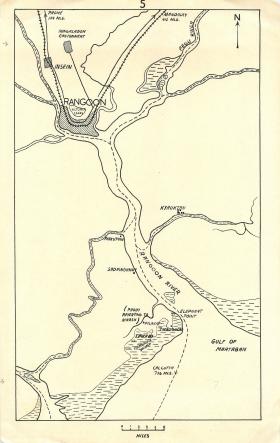
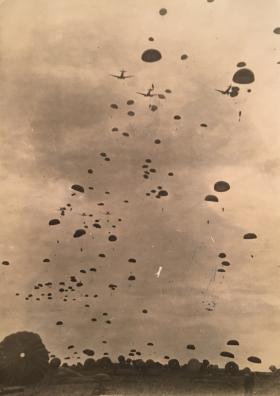


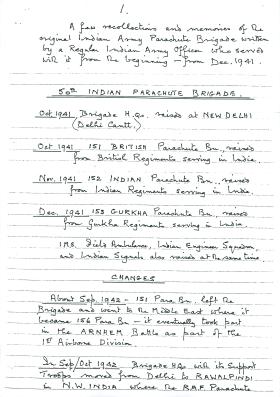
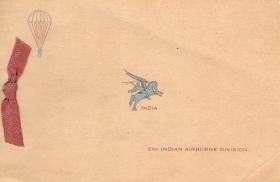


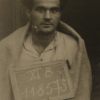

Latest Comments
There are currently no comments for this content.
Add Comment
In order to add comments you must be registered with ParaData.
If you are currently a ParaData member please login.
If you are not currently a ParaData member but wish to get involved please register.